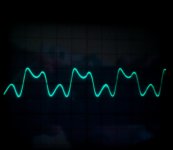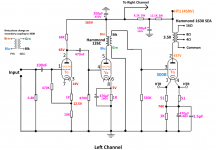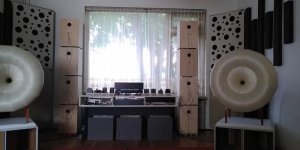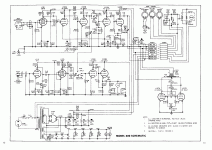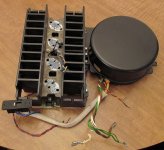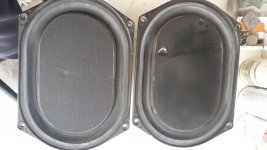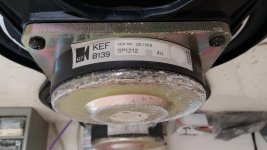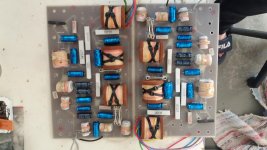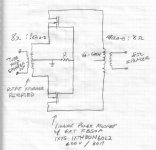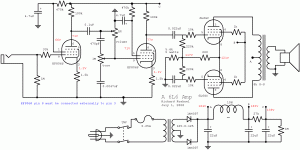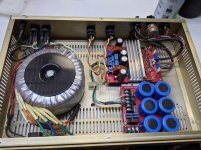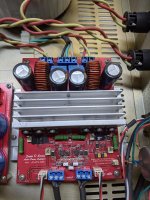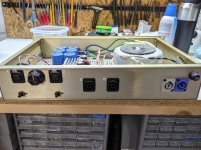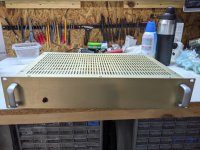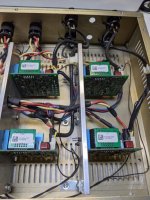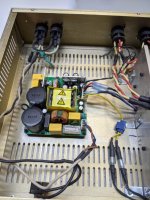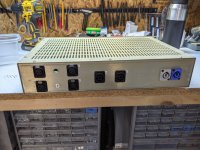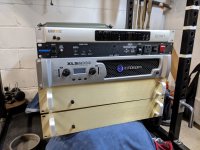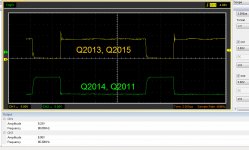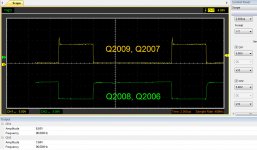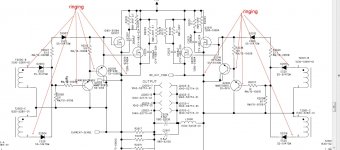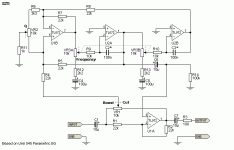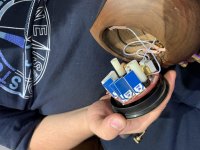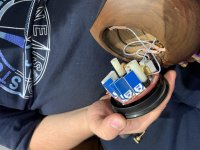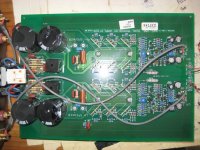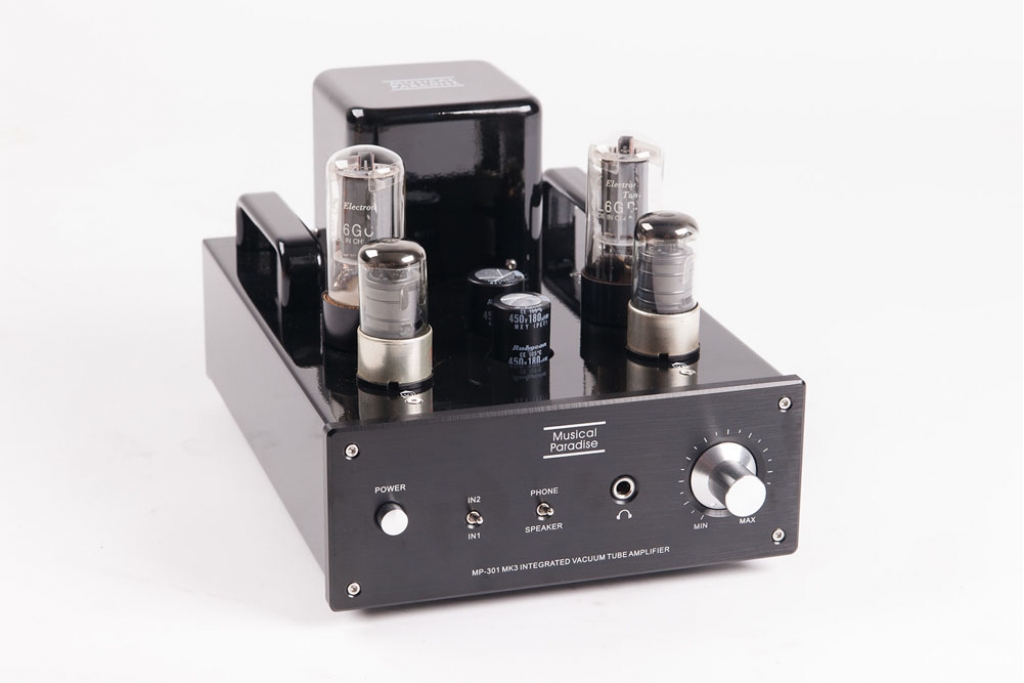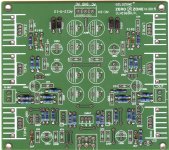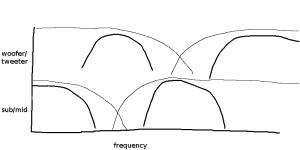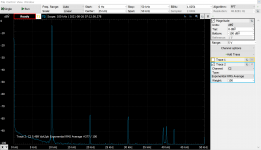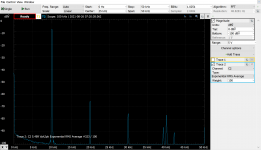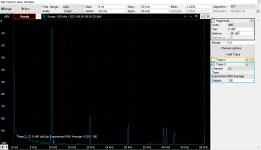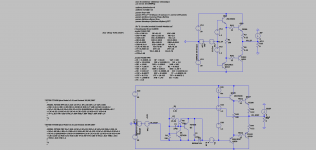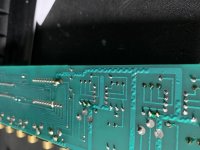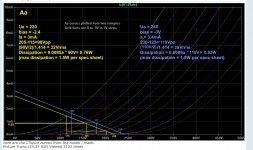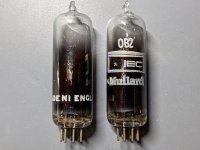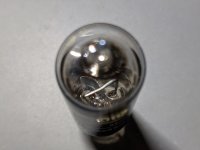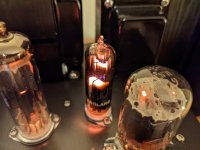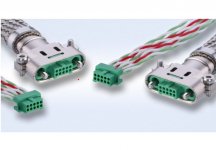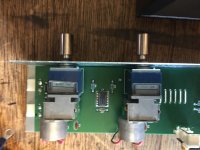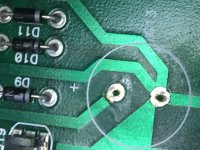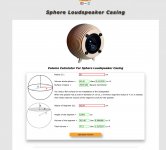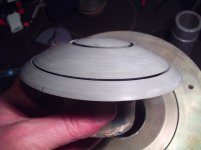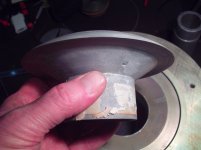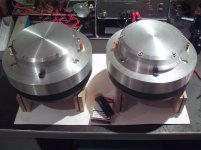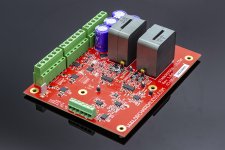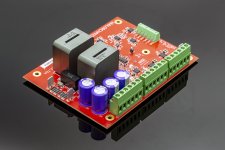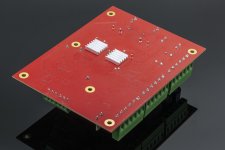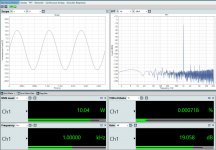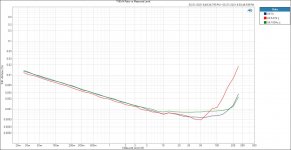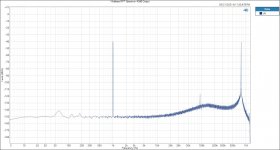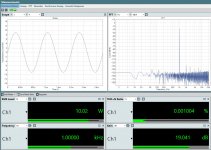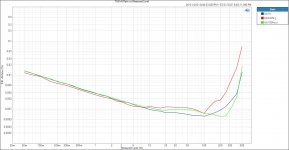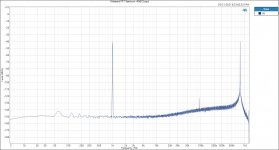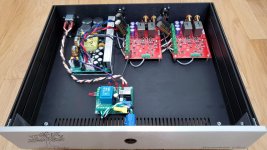I think this might be my first post here, I am certianly a noob to the forum and today is likely the longest I have even been logged in.
Lived in So Cal for 47 years and a few years ago moved to West Tennessee.
I have been fairly consistent in activity level, building and designing tube amps for audio reproduction since about 1994. For many years I bought and sold vacuum tubes (and tube relateds) in So Cal and supplemented my income with such. Then it became antique radio repair, then HAM radio, along the way I started a firm that provided low voltage and communications services for LA/OC and all of So Cal. My base was mostly in West LA. Along the way I got to experience systems like Cello Music/Levinson, countless ridiculous audio and media systems working for the LA Elites and that experience helped guide my tastes, preferences and expectations from audio and other electronic systems. Ive been In the homes or Perenchio, Murdoch, Senators, actors/actresses, producers and directors (Copollas home to name one), Paramount, Warner Bros, CBS, NBC (every studio in So Cal), musicians, comedians, philanthropists, bankers, felons (rich ones), engineers and retired Secret Service agents, plus Vic Edelbrock, Parnelli Jones, Vasek Polak and the President of Nissan Motors at his CA rental home on Portugeuse Bend Road (just to go a different direction in the list), etc. My work allowed me to meet an inumerable host of people and most all of them had audio and video systems (why I was in their homes and businesses to start with). I remember a guy name M.C. Hong in Rolling Hills, CA (Evergreen Shipping, China seems to ring a bell), All I know was he had $7000 a sheet wall paper (it was gold leaf) being hung for the second time in his home, as he didnt like the test wall (like 11 sheets required) and had the prior equally expensive paper removed! So I met a diverse group of people, I was fortunate and it was a career. I have heard many audio systems but in the last decade that has been on a serious decline, really serious decline. And now I hear NONE.
A case in point, it was a video system in Encino that put me in this Chinese guys house, really great fellow. He was a strip mall owner and lived on a short street off Van Nuys Blvd West of the 405 by a few miles. He had audio systems in every room (BIG BI-LEVEL house) and had maybe 6-7 of them in the great room downstairs. Enough gear where you wadded through it! He traded on an open account with some well knonw audio store even further west on the Blvd. It was a marble crypt, hard surfaces everywhere. But this is where I first experienced electrostats as tall as me at 6 foot, maybe taller. Big 120 Watt Jadis monoblocks feeding them (with rows of Genuine Tungsol 6550US STs on fire). Opera is what I heard and I had a fit listening while I worked. Never heard music so good and instead of enjoying Jim Morrison, I found myself really immersed in Opera for teh first time and enjoyed crap out of it. I broke my foot at that job, dropped a heavy item in his driveway and broke metatarsals while I honored his request to go shoeless in the house. Magnepans, tubes---- Thiel speakers, horns, just stupid amounts of gear. That is when I said- screw Mosfets and Silicon!
Just a fun memory to give some insight to my history and experiences.
When I moved to TN I did not retire. I became a supporter of agriculture, I work for farmers and agriculture businesses and also manufacturing plants of all sorts. I no longer build audio and video systems, I can't even find one here....... I know where the RICE, yellow soy, corn, milo, hard red and soft white wheats are grown and I can probably grade a grain and get pretty close to a price for a given moisture and Bushel Weight. Meaning........ the electronics I see now are PLC's and motor controls, and scales and moisture meters and process switches and tractors and grain bins with blowers and heaters! You eat and have diesel and ethanol and rice in part, because of my participation in agriculture. Im proud to be part of it now.
I wanted to post to say hello and maybe reach a sourcepool of WEST TN, EAST AR, NORTH MS goofs that are looking for another goof that builds audio gear or at least likes to listen to "quality music" whom I can communicate with. I have ZERO except the Atlanta Audio Society (IIRC) and they have never replied to any email I have sent. Plus they are too far to bother. I am shocked that there is NO Audio Club of any kind here in and around Memphis..... the home of SUN Studios, Beale Street, blah blah blah. I dont even think there is one in Nashville. I have searched, I find nothing, anywhere within reach.
BTW: Im NOT OPPOSED TO HELPING FOUND OR OTHERWISE INITIATING ONE! Hint Hint!!
Anyway, thanks for a great forum. I have perused it MANY MANY times for anecdotal data (for many many years) and it has been a useful resource. If anyone has any experience with Burning Amp Fest and how that whole "bring your gear for audition" works, Id sure like to hear about it. PM me.
Not sure I have anything to contribute unless you want to know what moisture you should sell your yellow soy at for best return and even then....... At some point Ill probably speak up about some designs and some theory (mine not yours!) but I spend less time crunching numbers for a perfect load line and I like what Nobu K. Shishido always leaned toward ..... using his ears more than his eyes because we cant listen with our eyes and a load line sounds horrible. That whole Eastern Medicine vs Western, not that a rat tail tea will or wont cure me of a disease but there is more than meets the eye in audio, there is always what meets your ears too. My wife cant hear a load line and she could care less where the Q point is, so really I shouldnt necessarily focus on one. If it sounds awesome, then maybe its right???? If she likes it and proclaims it awesome, even better?? Quite honestly Im sick, the build and design time is far more appealing than the finished product...... Im sure in a group of DIY'ers I am alone in this sickness to which there is no known cure.
I am corerftech absolutely everywhere and there is no other. If you see that handle somewhere on the net, its me!
Mike in Germantown!!
Formerly of Garden Grove, CA for 47 years.
